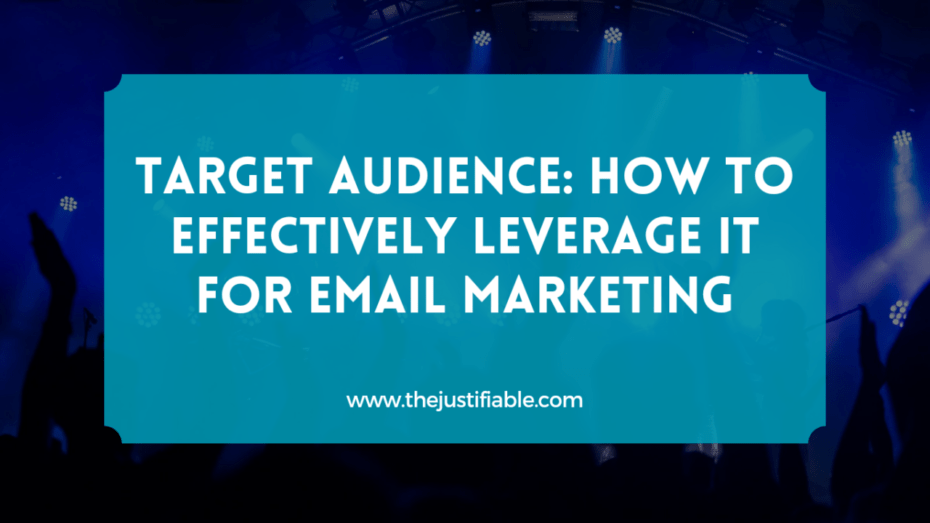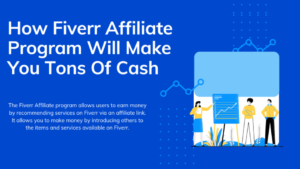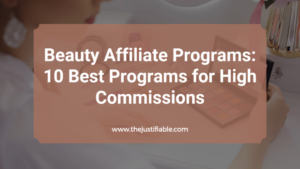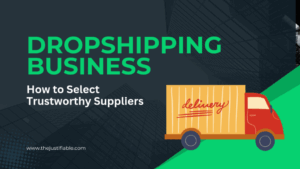Table of Contents
Understanding your target audience is crucial for any email marketing campaign. Knowing who your audience is allows you to tailor your messages, offers, and overall strategy to better meet their needs and preferences.
In this article, we’ll explore how to effectively leverage your target audience to enhance your email marketing efforts, leading to higher engagement and conversion rates.
Identifying Your Target Audience for Email Marketing
Understanding your target audience is essential for any successful email marketing campaign. By identifying who your audience is, you can create more relevant and engaging content that resonates with them. This process involves analyzing demographics and psychographics, creating detailed buyer personas, and utilizing customer data and analytics to refine your approach.
To start, I recommend you focus on gathering as much information as possible about your current customers and potential leads. This data will be invaluable in helping you understand their needs, preferences, and behaviors. Most importantly, this insight will allow you to tailor your email marketing strategy to better meet their expectations and drive higher engagement rates.
Email Marketing Recommendations
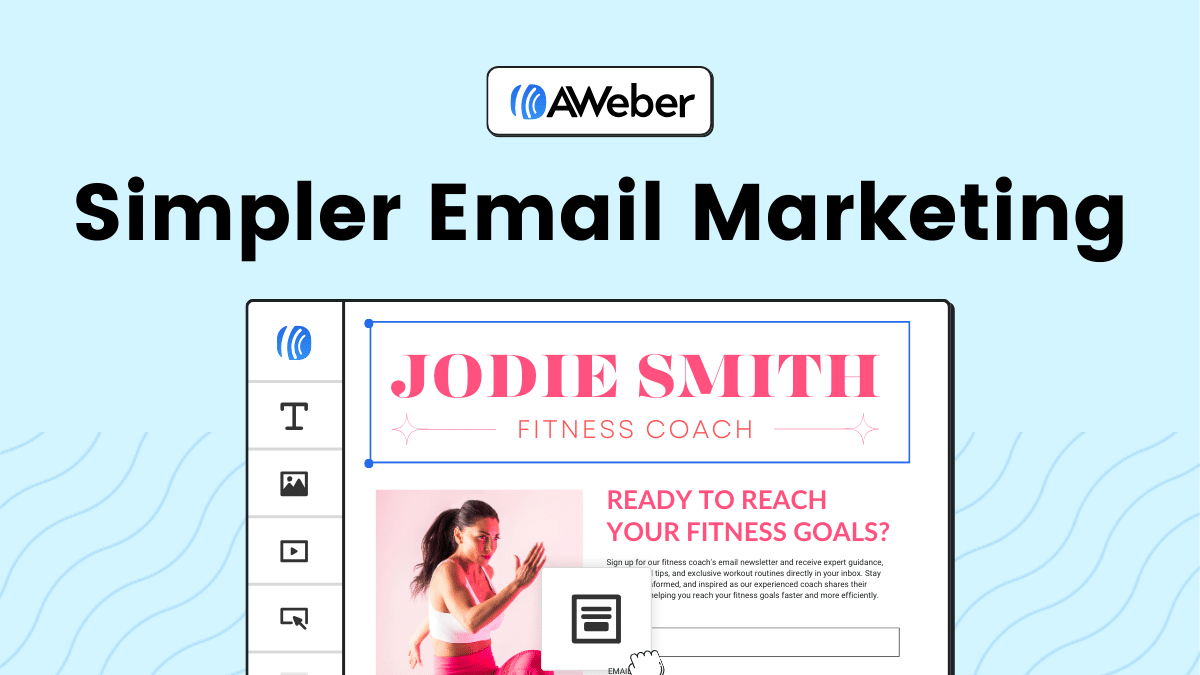 Aweber
| 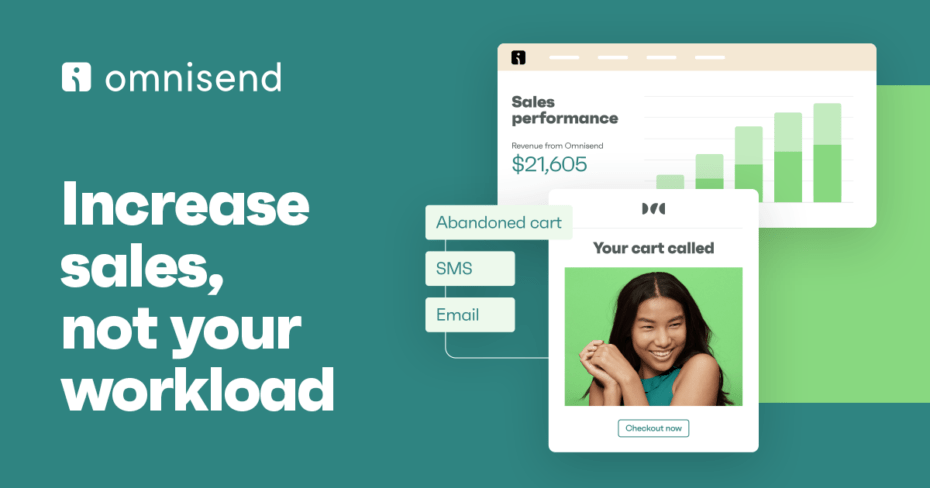 Omnisend
| 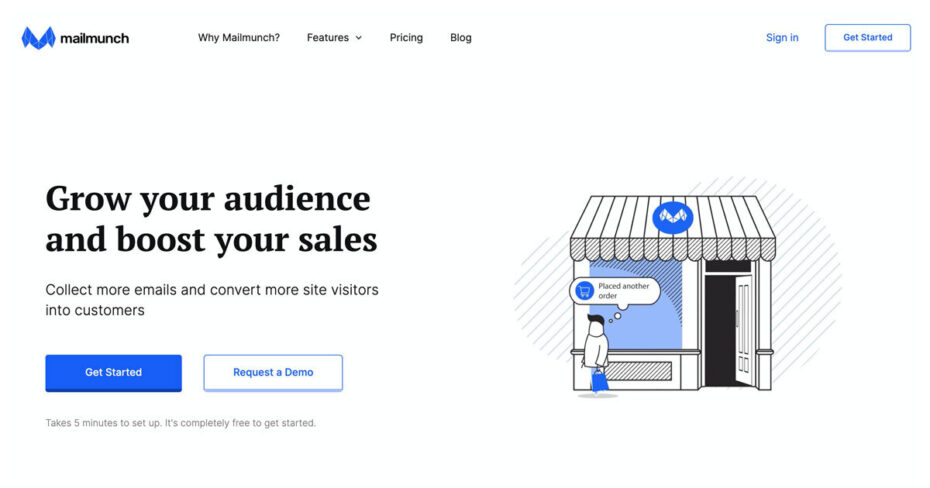 Mailmunch
|
Analyzing Demographics and Psychographics
When analyzing your target audience, it’s crucial to consider both demographics and psychographics. Demographics include age, gender, income level, education, and location. These basic details provide a snapshot of who your audience is.
For instance, I advise you to look at your current customer base and see if there are any commonalities in their demographics. This can help you identify trends and tailor your messaging to better suit their characteristics. Additionally, understanding these factors can guide your targeting efforts, ensuring that your emails reach the right people at the right time.
Psychographics, on the other hand, delve deeper into your audience’s attitudes, values, interests, and lifestyles. This information helps you understand why your audience behaves the way they do. I suggest conducting surveys or interviews to gather this data, as it can reveal insights that demographics alone cannot provide.
My recommendation is to combine both demographic and psychographic data to create a comprehensive profile of your target audience. This holistic view will allow you to craft more personalized and effective email campaigns.
Creating Detailed Buyer Personas
Creating detailed buyer personas is a powerful way to bring your target audience to life. These personas are fictional representations of your ideal customers, based on real data and insights. They help you understand and empathize with your audience, making it easier to create content that resonates with them.
Start by gathering data from various sources, such as customer surveys, interviews, and web analytics. Look for common traits and behaviors among your best customers. I believe you should create multiple personas to represent different segments of your audience, as this will allow you to tailor your messaging more precisely.
For each persona, include details like age, occupation, interests, challenges, and goals. My advice is to give each persona a name and a backstory to make them more relatable. This exercise will help you visualize your audience and ensure that your email content speaks directly to their needs and desires.
Most importantly, use these personas to guide your content creation and marketing strategy. By keeping your personas in mind, you can create more targeted and effective email campaigns that truly connect with your audience.
Utilizing Customer Data and Analytics
Leveraging customer data and analytics is key to understanding your target audience and optimizing your email marketing efforts. This data provides valuable insights into how your audience interacts with your emails and what drives their engagement.
I recommend you start by analyzing your email campaign performance metrics, such as open rates, click-through rates, and conversion rates. This information can help you identify what is working well and where there is room for improvement. For example, if you notice that certain types of content or subject lines consistently perform better, you can focus on creating more of that content.
Additionally, consider using tools like Hotjar to track user behavior on your website. This data can reveal which pages your audience visits most frequently, how long they stay on your site, and what actions they take. I point out that this information can be incredibly useful in tailoring your email content to better meet your audience’s interests and needs.
My recommendation is to regularly review and analyze your customer data to stay informed about your audience’s preferences and behaviors. By doing so, you can continuously refine your email marketing strategy and deliver more relevant and engaging content to your target audience.
Segmenting Your Email Lists for Maximum Impact
Segmenting your email lists is crucial for maximizing the impact of your email marketing campaigns. By dividing your audience into smaller, more targeted groups, you can send more relevant and personalized messages that resonate with each segment. I strongly believe this approach leads to higher engagement rates and better overall performance.
I recommend you begin by analyzing your existing email list to identify key segments. Look for patterns and trends in your audience’s behavior, preferences, and demographics. My advice is to use this information to create segments that are meaningful and actionable, allowing you to tailor your messaging and offers to each group effectively.
Importance of List Segmentation
List segmentation is essential because it allows you to deliver more personalized and relevant content to your target audience. When you send tailored messages, your subscribers are more likely to engage with your emails, resulting in higher open and click-through rates. Most importantly, segmented campaigns can significantly boost your conversion rates and drive more sales.
I point out that segmentation helps you avoid the pitfalls of generic email blasts that often end up in the spam folder. By addressing the specific needs and interests of each segment, you can build stronger relationships with your subscribers. I advise you to regularly review and update your segments to ensure they remain relevant and effective.
Furthermore, segmentation enables you to test different strategies and identify what works best for each group. I recommend you experiment with various content types, send times, and frequency to optimize your campaigns. This iterative approach will help you continuously improve your email marketing efforts and achieve better results.
Common Segmentation Criteria
There are several common criteria you can use to segment your email list. One effective approach is to segment based on demographics, such as age, gender, income level, and location. This allows you to tailor your messaging to the specific characteristics of each group.
Another important criterion is behavior. I suggest you look at how your subscribers interact with your emails and website. For example, you can create segments based on past purchase behavior, email engagement, or browsing history. This data can help you identify your most loyal customers and those who may need more nurturing.
I recommend you also consider segmenting based on psychographics, which includes interests, values, and lifestyle. This deeper understanding of your audience can help you create more compelling and relevant content. My suggestion is to use surveys and quizzes to gather this information directly from your subscribers.
Lastly, I believe you should segment based on engagement levels. This involves categorizing subscribers based on how often they open and click on your emails. By identifying your most and least engaged subscribers, you can tailor your re-engagement strategies accordingly.
Advanced Segmentation Strategies
To take your segmentation efforts to the next level, consider implementing advanced strategies. One approach is to use predictive analytics to anticipate future behavior. This involves analyzing past data to predict what your subscribers are likely to do next, allowing you to proactively tailor your messaging.
I advise you to explore dynamic segmentation, which updates segments in real-time based on subscriber actions. For example, if a subscriber makes a purchase, they can automatically be moved to a different segment. This ensures that your messaging is always relevant and timely.
Another advanced strategy is to use RFM (Recency, Frequency, Monetary) analysis to segment your audience. This involves categorizing subscribers based on how recently they made a purchase, how often they purchase, and how much they spend. I recommend this approach for identifying high-value customers and targeting them with special offers and rewards.
Lastly, consider using machine learning algorithms to uncover hidden patterns and insights in your data. These algorithms can help you identify new segments and optimize your campaigns more effectively. I suggest collaborating with data scientists or using advanced email marketing tools to leverage this technology.
By implementing these advanced segmentation strategies, you can enhance your email marketing efforts and achieve even greater success. Remember, the key is to continuously analyze and refine your segments to stay aligned with your audience’s evolving needs and preferences.
Crafting Personalized Email Content for Your Audience
Creating personalized email content is essential for engaging your target audience effectively. Personalization goes beyond just using the recipient’s name; it involves tailoring your messages to meet their specific needs and interests. I strongly believe that by personalizing your email content, you can significantly increase open rates, click-through rates, and conversions.
I recommend starting with a solid understanding of your audience’s preferences and behaviors. Use this information to craft messages that resonate with them on a personal level. My suggestion is to leverage dynamic content and advanced personalization techniques to ensure each email feels relevant and valuable to the recipient.
Using Dynamic Content and Personalization
Dynamic content allows you to customize different parts of your email based on the recipient’s data. This could include personalized product recommendations, location-specific offers, or content tailored to their past interactions with your brand. I advise you to use dynamic content to make your emails more engaging and relevant.
For example, if you know a subscriber has previously purchased a specific type of product, you can include similar product recommendations in your next email. I believe this approach increases the likelihood of repeat purchases and enhances the overall customer experience. Additionally, you can personalize emails based on the recipient’s browsing history, purchase behavior, and preferences.
My recommendation is to use email marketing platforms that support dynamic content and personalization features. These tools make it easy to create customized emails at scale. Most importantly, regularly analyze the performance of your personalized emails and adjust your strategy based on what works best for your audience.
Writing Compelling Subject Lines
The subject line is the first thing your audience sees, and it plays a crucial role in determining whether they open your email. I strongly believe that a compelling subject line can significantly boost your open rates. I suggest keeping your subject lines concise, clear, and intriguing.
Start by addressing the recipient’s needs or interests. For instance, if you’re offering a special discount, mention it in the subject line. My advice is to use action-oriented language that encourages the recipient to open the email. Additionally, including personalization, such as the recipient’s name or location, can make your subject lines more appealing.
Avoid using spammy or misleading subject lines, as these can harm your credibility and lead to lower engagement. Instead, focus on delivering value and sparking curiosity. I recommend testing different subject lines through A/B testing to see which ones perform best. This data-driven approach will help you continuously refine your subject lines for maximum impact.
Designing Emails That Resonate
The design of your emails is just as important as the content. A well-designed email can capture your audience’s attention and make your message more compelling. I advise you to use a clean and visually appealing layout that aligns with your brand’s identity.
First, ensure your emails are mobile-friendly, as a significant portion of your audience will likely open your emails on their mobile devices. I recommend using responsive design techniques to ensure your emails look great on any screen size. Additionally, use eye-catching images and visuals to make your emails more engaging.
I suggest keeping your email design simple and uncluttered. Use clear headings, bullet points, and short paragraphs to make your content easy to read. My advice is to include a strong call-to-action (CTA) that stands out and encourages the recipient to take the desired action.
Furthermore, personalize the design elements based on the recipient’s preferences and behavior. For example, you can use different color schemes or images based on the recipient’s past interactions with your brand. This level of personalization can make your emails feel more tailored and relevant, increasing the likelihood of engagement.
By focusing on crafting personalized email content, using dynamic content and personalization, writing compelling subject lines, and designing emails that resonate, you can create email marketing campaigns that truly connect with your audience and drive meaningful results.
Timing and Frequency of Emails to Your Target Audience
Getting the timing and frequency of your emails right is crucial for engaging your target audience. I strongly believe that sending emails at the optimal time and maintaining the right frequency can significantly enhance your open and click-through rates. By understanding when and how often your audience prefers to receive emails, you can increase your campaign’s effectiveness.
My recommendation is to start by analyzing your audience’s behavior and preferences. Use data from past campaigns to identify trends and patterns in open rates and engagement. This information will help you determine the best times and frequencies to send your emails, ensuring that they reach your target audience when they are most likely to engage.
Determining the Optimal Send Times
Finding the optimal send times for your emails involves understanding your audience’s daily routines and preferences. I suggest looking at your email analytics to see when your emails have been most successful in the past. This data can give you valuable insights into the best times to reach your audience.
For example, you might find that your target audience is more likely to open emails in the morning before work or during lunch breaks. My advice is to experiment with sending emails at different times of the day and analyze the results. This will help you identify the optimal send times that maximize engagement.
I recommend you to also consider the time zones of your subscribers. If you have a global audience, segment your email list by time zone and schedule your emails accordingly. This ensures that your emails arrive at a convenient time for all your subscribers, regardless of where they are located.
Balancing Email Frequency
Balancing the frequency of your emails is just as important as timing. Sending too many emails can overwhelm your audience and lead to higher unsubscribe rates, while sending too few can result in missed opportunities for engagement. I believe finding the right balance is key to maintaining a healthy and engaged email list.
Start by analyzing the frequency of your past email campaigns and their impact on engagement and unsubscribe rates. My recommendation is to segment your audience based on their engagement levels. For highly engaged subscribers, you might increase the frequency, while for less engaged subscribers, you might reduce it to avoid overwhelming them.
I suggest considering the type of content you are sending. For instance, promotional emails might be sent less frequently than newsletters or updates. By tailoring the frequency based on the content type and audience segment, you can optimize your email strategy for better results.
Testing and Adjusting Email Schedules
Testing and adjusting your email schedules is crucial for optimizing your email marketing strategy. I advise you to use A/B testing to experiment with different send times and frequencies. This allows you to compare the performance of various schedules and determine what works best for your audience.
For example, you can test sending emails on different days of the week to see which days result in higher open and click-through rates. I recommend analyzing the results of these tests to identify patterns and make data-driven decisions about your email schedule.
My advice is to continuously monitor and adjust your email schedules based on performance metrics. This iterative approach ensures that your email marketing strategy remains effective and aligned with your audience’s preferences. Additionally, consider using email marketing tools that offer advanced scheduling features and analytics to streamline this process.
By focusing on determining the optimal send times, balancing email frequency, and testing and adjusting your email schedules, you can create a more effective email marketing strategy that resonates with your target audience. This approach ensures that your emails are timely, relevant, and engaging, leading to better overall performance.
Analyzing and Optimizing Email Campaign Performance
Analyzing and optimizing email campaign performance is crucial for achieving better results and ensuring your efforts are paying off. By closely monitoring your email campaigns, you can identify areas of improvement and make data-driven decisions to enhance your strategy. I believe that a thorough analysis of your campaigns can lead to significant improvements in engagement and conversion rates.
My advice is to start by defining clear goals for your email campaigns. This will help you measure success and determine which metrics are most important for your objectives. I recommend regularly reviewing your campaign performance to stay on track and make necessary adjustments to optimize your results.
Key Metrics to Track
Tracking the right metrics is essential for understanding the effectiveness of your email campaigns. Some of the key metrics you should focus on include open rates, click-through rates, conversion rates, and unsubscribe rates. I suggest keeping a close eye on these metrics to gauge how well your emails are performing.
Open rates indicate how many recipients are opening your emails. A high open rate suggests that your subject lines and sender name are compelling. My recommendation is to test different subject lines to see which ones yield the highest open rates. Additionally, consider the timing of your emails, as this can also impact open rates.
Click-through rates show the percentage of recipients who click on links within your email. This metric is crucial for understanding how engaging your content is. I advise you to experiment with different call-to-action (CTA) placements and designs to improve your click-through rates. Ensure that your CTAs are clear and enticing to encourage more clicks.
Conversion rates measure the percentage of recipients who take the desired action after clicking through your email. This could be making a purchase, signing up for a webinar, or downloading a resource. I recommend optimizing your landing pages to ensure they are aligned with your email content and provide a seamless user experience.
Unsubscribe rates indicate how many recipients are opting out of your email list. A high unsubscribe rate could be a sign that your content is not resonating with your audience. I strongly believe that by segmenting your email list and personalizing your content, you can reduce unsubscribe rates and keep your audience engaged.
A/B Testing Strategies
A/B testing is a powerful method for optimizing your email campaigns. By testing different elements of your emails, you can identify what works best for your audience. I suggest starting with simple tests, such as subject lines, to see which ones result in higher open rates.
My advice is to test one variable at a time to ensure you can accurately measure the impact of each change. For example, you might test different email designs, CTAs, or send times. I recommend analyzing the results of your A/B tests to determine which variations perform better and implement those changes in your future campaigns.
Additionally, consider testing different email formats, such as plain text versus HTML emails. Some audiences may prefer a simpler design, while others might respond better to more visually appealing emails. I point out that testing different formats can help you understand your audience’s preferences and optimize your email design accordingly.
I recommend you to document your A/B testing results and use the insights gained to inform your email marketing strategy. This iterative approach will help you continuously improve your campaigns and achieve better results over time.
Continuous Improvement Techniques
Continuous improvement is key to maintaining a successful email marketing strategy. I advise you to regularly review your campaign performance and identify areas where you can make improvements. This could involve tweaking your content, design, or targeting strategies to better meet your audience’s needs.
One technique I suggest is to conduct regular audience surveys to gather feedback on your emails. This can provide valuable insights into what your subscribers like and dislike, helping you make informed decisions about your content and design. Additionally, use this feedback to refine your segmentation and personalization efforts.
I believe that staying up-to-date with email marketing trends and best practices is crucial for continuous improvement. Attend webinars, read industry blogs, and network with other email marketers to learn new techniques and strategies. This will help you stay ahead of the curve and ensure your email campaigns remain effective.
Finally, I recommend using email marketing tools that offer advanced analytics and automation features. These tools can help you streamline your processes, track performance more accurately, and implement improvements more efficiently. By leveraging these tools, you can enhance your email marketing strategy and achieve better results.
Best Practices for Engaging Your Target Audience
Engaging your target audience effectively is crucial for the success of your email marketing campaigns. By adopting best practices, you can foster stronger relationships with your subscribers and drive higher engagement rates. I strongly believe that focusing on building trust, encouraging interaction, and consistently providing value will lead to more successful outcomes.
My advice is to always put your audience’s needs and preferences at the forefront of your email marketing strategy. By doing so, you can create content that resonates with them and keeps them coming back for more. I recommend regularly analyzing your email performance to identify what works best and continuously refining your approach.
Building Trust and Credibility
Building trust and credibility with your target audience is essential for long-term engagement. When your audience trusts you, they are more likely to open your emails, engage with your content, and act on your calls-to-action. I advise you to be transparent and consistent in your communications to establish this trust.
One way to build trust is by delivering on your promises. If you tell your subscribers they will receive weekly updates, ensure you send them consistently. I suggest you avoid making exaggerated claims or using clickbait tactics, as these can erode trust. Instead, focus on providing accurate and honest information that your audience can rely on.
Another important aspect is showcasing your expertise. Share valuable insights, tips, and industry knowledge that demonstrate your authority in your field. I recommend including customer testimonials, case studies, and social proof in your emails to further enhance your credibility. This not only builds trust but also positions you as a go-to resource for your audience.
Encouraging Interaction and Feedback
Encouraging interaction and feedback from your target audience is vital for fostering engagement and building stronger relationships. When your subscribers feel heard and valued, they are more likely to stay engaged with your emails. I suggest creating opportunities for your audience to interact with your content and share their thoughts.
One effective way to encourage interaction is by including questions and polls in your emails. Ask your subscribers for their opinions on relevant topics or invite them to participate in surveys. I strongly believe this not only increases engagement but also provides you with valuable insights into your audience’s preferences and needs.
Another strategy is to prompt your subscribers to reply to your emails. For example, you can ask them to share their experiences or provide feedback on your products or services. I recommend making it clear that you value their input and will use it to improve your offerings. This approach helps to create a two-way conversation and strengthens your relationship with your audience.
In addition, consider leveraging social media to extend the interaction beyond your emails. Include social media buttons and encourage your subscribers to follow you and engage with your content on these platforms. I advise you to regularly monitor and respond to comments and messages to maintain an active and engaged community.
Providing Value in Every Email
Providing value in every email is crucial for maintaining your audience’s interest and engagement. When your subscribers find your content valuable, they are more likely to open your emails and take action. I believe that focusing on delivering relevant and useful information will keep your audience coming back for more.
One way to provide value is by sharing exclusive content and offers. For example, you can offer special discounts, early access to new products, or insider tips that are only available to your email subscribers. My recommendation is to make your subscribers feel special and appreciated by giving them access to something they can’t get elsewhere.
Another approach is to provide educational content that helps your audience solve problems or achieve their goals. This could include how-to guides, tutorials, and industry insights that are relevant to their interests. I advise you to use a mix of formats, such as articles, videos, and infographics, to keep your content engaging and varied.
Additionally, personalize your emails based on your audience’s preferences and behaviors. Use data from past interactions to tailor your content to their specific needs. For instance, if a subscriber has shown interest in a particular topic, I suggest sending them more content related to that topic. This level of personalization demonstrates that you understand and care about their interests.
Finally, ensure your emails are well-designed and easy to read. Use clear headings, concise text, and visually appealing layouts to make your content accessible and enjoyable. I point out that a well-designed email not only enhances the user experience but also reinforces your brand’s professionalism and credibility.
Leveraging Automation to Reach Your Target Audience
Leveraging automation is essential for efficiently reaching your target audience and enhancing your email marketing efforts. Automation allows you to send timely, relevant, and personalized emails without the need for constant manual intervention. I believe that by using automation, you can streamline your processes and improve the overall effectiveness of your campaigns.
My suggestion is to start by identifying key areas where automation can benefit your email marketing strategy. This could include welcome emails, follow-ups, and re-engagement campaigns. I advise you to use automation tools that integrate seamlessly with your existing email marketing platform to maximize efficiency and effectiveness.
Setting Up Automated Email Workflows
Setting up automated email workflows is a crucial step in leveraging automation to reach your target audience. These workflows allow you to create a series of emails that are automatically sent based on specific triggers or actions taken by your subscribers. I recommend starting with simple workflows and gradually adding more complexity as you become comfortable with the process.
One common automated workflow is the welcome series, which is triggered when a new subscriber joins your email list. I suggest including a sequence of emails that introduce your brand, highlight key products or services, and provide valuable content to engage your new subscribers. This helps build a strong relationship from the start and sets the tone for future communications.
Another effective workflow is the abandoned cart series, designed to re-engage customers who have added items to their cart but have not completed the purchase. I advise you to send a series of reminder emails, offering incentives such as discounts or free shipping to encourage them to complete their purchase. This can significantly boost your conversion rates and recover potentially lost sales.
Additionally, consider setting up re-engagement workflows for inactive subscribers. These emails can help bring back subscribers who haven’t interacted with your emails in a while. I recommend including personalized content and special offers to entice them to re-engage with your brand.
Triggering Emails Based on Behavior
Triggering emails based on subscriber behavior is a powerful way to ensure your messages are relevant and timely. Behavioral triggers allow you to send targeted emails based on specific actions taken by your subscribers, such as making a purchase, clicking a link, or visiting a particular page on your website. I strongly believe that this approach can lead to higher engagement and better results.
For example, if a subscriber clicks on a link to a specific product category, you can trigger an email showcasing related products or offering a special promotion. I recommend using this opportunity to provide personalized recommendations based on their interests, which can increase the likelihood of a purchase.
Another effective trigger is based on purchase behavior. If a customer buys a product, you can send a follow-up email with related product recommendations or instructions on how to use the product. My advice is to use this follow-up email to enhance the customer experience and encourage repeat purchases.
Additionally, consider using website activity as a trigger for your emails. If a subscriber spends a significant amount of time on a particular page or visits multiple pages, you can send an email offering additional information or a special offer related to their interests. I suggest using this strategy to engage your audience and provide them with valuable content that meets their needs.
By triggering emails based on behavior, you can create a more personalized and engaging experience for your subscribers. This approach ensures that your emails are relevant and timely, leading to higher open rates, click-through rates, and conversions.
Maintaining a Human Touch in Automated Emails
Maintaining a human touch in automated emails is crucial for keeping your communications personal and relatable. While automation offers efficiency, it’s important to ensure your emails don’t feel robotic or impersonal. I recommend incorporating elements that make your automated emails feel more human and genuine.
First, personalize your emails as much as possible. Use the subscriber’s name and tailor the content to their preferences and behavior. My suggestion is to use dynamic content and merge tags to create personalized greetings and messages. This small touch can make a big difference in how your emails are perceived.
Another way to maintain a human touch is by writing in a conversational tone. Avoid overly formal language and instead, write as if you are speaking directly to the subscriber. I advise you to use friendly, approachable language that reflects your brand’s personality. This helps create a connection with your audience and makes your emails more engaging.
Additionally, consider including personal anecdotes or stories in your automated emails. Sharing experiences or insights from your team can make your emails feel more authentic and relatable. I believe that storytelling is a powerful tool for building connections and keeping your audience interested.
Finally, always provide an easy way for subscribers to contact you. Include a reply-to email address or a link to a contact form in your automated emails. I recommend encouraging subscribers to reach out with any questions or feedback. This shows that you value their input and are available to assist them, further enhancing the personal touch.


